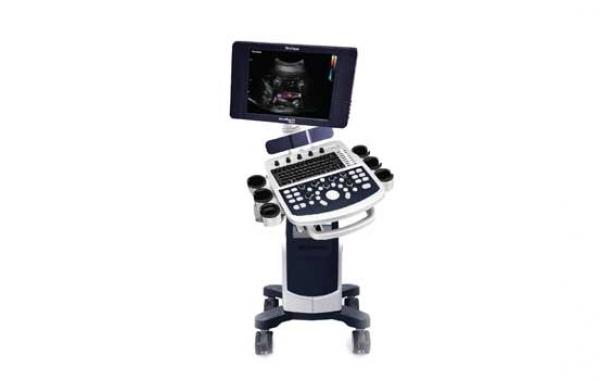Notifications

7 minutes, 50 seconds
-106 Views 0 Comments 0 Likes 0 Reviews

Medical diagnostics have evolved rapidly over the past few decades, offering non-invasive, accurate, and real-time insights into the human body. One of the most powerful tools in modern diagnostic imaging is color doppler sonography. This advanced ultrasound technique has become indispensable in evaluating blood flow, detecting vascular conditions, and improving clinical outcomes across multiple medical specializations.
As a global leader in medical technology, Trivitron Healthcare is committed to delivering high-quality diagnostic imaging equipment that meets the dynamic needs of healthcare professionals. In this article, we will explore the working principles, clinical applications, and advantages of color doppler sonography, and how Trivitron is supporting diagnostic excellence with cutting-edge solutions.
Color doppler sonography, also known as color flow doppler ultrasound, is an imaging technique that uses sound waves to visualize blood flow through vessels and organs in real-time. Unlike conventional grayscale ultrasound, which provides static images of soft tissues and anatomical structures, color doppler overlays moving colors onto the image to represent the direction and velocity of blood flow.
Red and blue color codes are typically used to indicate the flow direction relative to the probe:
Red indicates blood flowing toward the probe.
Blue shows blood flowing away from the probe.
The ability to visualize hemodynamics makes color doppler sonography a valuable tool in diagnosing conditions related to blood circulation, such as blockages, narrowing of vessels, blood clots, and abnormal blood flow patterns.
This imaging technique combines traditional B-mode (brightness mode) ultrasound with Doppler effect principles. The Doppler effect refers to the change in frequency or wavelength of a wave in relation to an observer moving relative to the wave source—in this case, moving red blood cells.
Here’s how the process works:
Ultrasound waves are transmitted into the body by a transducer.
These waves bounce off moving red blood cells in the bloodstream.
The frequency shift is captured and analyzed to determine the speed and direction of blood flow.
The data is color-coded and displayed on the screen, superimposed on a grayscale image of the organ or vessel.
With this method, physicians can detect subtle variations in blood flow dynamics that may indicate underlying pathology.
Color doppler sonography has become a standard diagnostic tool across a wide range of medical fields. Its non-invasive nature and real-time capabilities make it ideal for quick, effective assessments.
Evaluation of blood flow through heart chambers and valves.
Detection of congenital heart defects, valve disorders, and myocardial ischemia.
Assessment of cardiac output and function.
Identification of arterial and venous blockages.
Diagnosis of deep vein thrombosis (DVT), varicose veins, and arterial stenosis.
Monitoring of grafts and stents post-surgery.
Assessing fetal health and placental blood flow.
Diagnosing ectopic pregnancies and fetal growth restrictions.
Evaluating uterine and ovarian vascularity.
Evaluating renal perfusion and detecting kidney blockages.
Diagnosing testicular torsion and other scrotal pathologies.
Assessing portal hypertension, liver cirrhosis, and tumor vascularity.
Evaluating blood flow in abdominal organs such as the pancreas and spleen.
Non-Invasive and Safe
Since it does not use ionizing radiation, color doppler sonography is considered safe even for pregnant women and children.
Real-Time Visualization
The real-time imaging allows physicians to assess blood flow instantly during the examination.
Early Detection of Diseases
It can reveal circulatory issues before symptoms appear, facilitating early intervention and treatment planning.
Cost-Effective Diagnostic Tool
Compared to CT angiography or MRI, doppler sonography is significantly more affordable and accessible.
Guidance for Interventions
It helps in guiding procedures such as biopsies, catheter placements, and surgeries by providing accurate visualization of vascular structures.
At Trivitron Healthcare, we are driven by innovation and clinical excellence. Our range of ultrasound and doppler imaging systems is designed to support diagnostic precision across multiple healthcare settings—from urban hospitals to rural clinics.
Key features of Trivitron’s doppler-enabled ultrasound systems include:
High-Resolution Imaging: Ensures detailed visualization of blood flow and soft tissues.
Advanced Color Flow Mapping: Offers precise, real-time assessment of vascular conditions.
User-Friendly Interfaces: Simplifies workflows for clinicians, improving diagnostic efficiency.
Portable and Versatile Systems: Designed for use in various clinical environments including emergency care, operating rooms, and outpatient departments.
We understand that the accuracy of a diagnosis often determines the success of a treatment. That’s why our technologies are rigorously tested to meet international quality and performance standards.
The field of ultrasound imaging continues to evolve, with innovations like elastography, contrast-enhanced ultrasound, and artificial intelligence enhancing the diagnostic value of traditional systems.
The future of color doppler sonography will likely include:
AI-Assisted Interpretation: Enhancing accuracy and reducing operator dependency.
3D/4D Doppler Imaging: Providing more comprehensive insights into vascular structures.
Tele-ultrasound Capabilities: Allowing remote consultations and diagnoses in underserved regions.
Trivitron is actively exploring these advancements to further empower clinicians with intelligent, next-generation diagnostic tools.
Color doppler sonography has transformed how clinicians evaluate and monitor circulatory health. Its ability to provide real-time, non-invasive, and detailed blood flow information makes it a vital component of modern medical diagnostics.
As a trusted name in healthcare innovation, Trivitron remains committed to supporting diagnostic excellence through advanced imaging technologies. By continually investing in research, design, and clinician training, we ensure that our solutions not only meet today’s clinical needs but also anticipate tomorrow’s healthcare challenges.
Whether you are a radiologist, cardiologist, obstetrician, or general practitioner, incorporating color doppler sonography into your diagnostic arsenal can significantly improve patient care outcomes.

